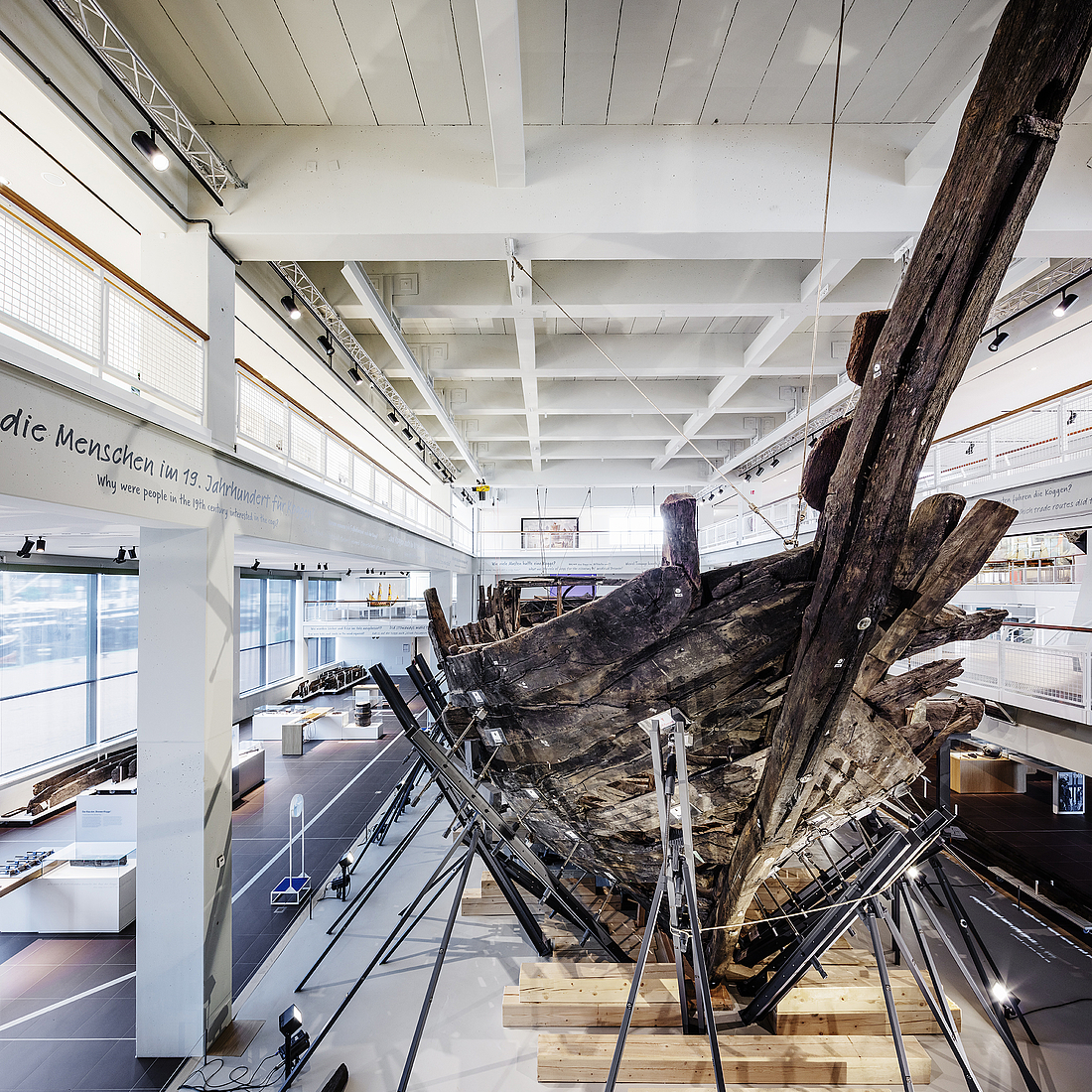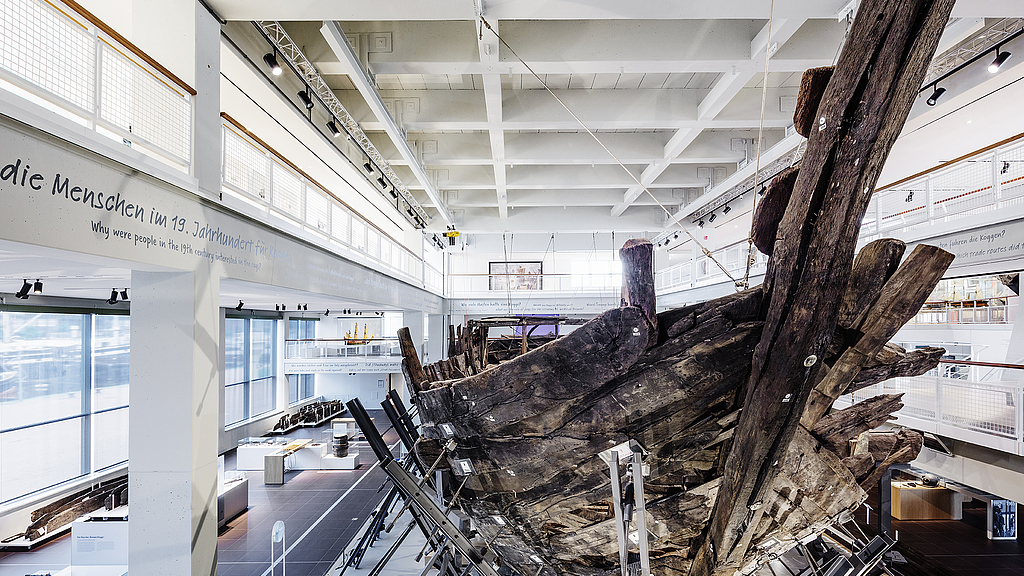Workshop: Digitization in Exhibition and Research - Minutes
Digitization in Exhibition and Research – a joint workshop of the Northern Sea Maritime Museums’ Network and the Baltic Sea Maritime Museums’ Network at the 7th of June 2021 – minutes
The history seafaring is in many respects a history of materials – they are a determining factor in the construction of vessels as well as their supply and maintenance in port and at sea. Their land-locked availability decides over a region’s ability to exploit maritime resources and project sea power, their use and handling on ships and in shipyards represents hundreds of years of experience and tradition. In more recent history, advances in materials science have both raised and answered questions of safety and sustainability in shipping. The importance and variety of materials in maritime history translates directly to many maritime collections, which includes a great spectrum of woods, metals, ceramics, textiles, paints, adhesives, plastics, and composites. The challenge of dealing with the historical dimension of these materials is overlaid by the further challenge of documenting, preserving and occasionally restoring those pieces both for exhibition purposes and long-term storage. The workshop assembled a range of talks stemming both from collection as well as exhibition practices and brought together museums from Poland, Norway, Netherlands and Germany.
Robert Domzal, director of the National Maritime Museum in Poland, and Ruth Schilling, scientific head of exhibition and research at the German Maritime Museum, greeted the participants. Mr Domzal pointed out to the long lasting wish of assembling both Baltic and Northern Sea Maritime Museums’ Networks, which lead to the workshop. Ruth Schilling gave a short input highlighting the research as well as communication potentials of digital methods and the necessity of a Europe-wide exchange on both conceptual as well as sometimes very practical questions.
Annette de Wit from the Maritime Museum in Rotterdam and Elisabeth Solvang Koren of the Norwegian National Maritime Museum in Oslo, presented two projects, which aimed at collecting material on the situation of seafarer during the COVID-19 pandemic. The interview material will be part of the museums’ collection as also visible as digital exhibitions. In both cases the communication with the seafarers proved to be difficult which hints to the often difficult working conditions they found themselves in aggravated by the present pandemic.
Both projects are very impressive endeavors documenting the present conditions of people working in the shipping industries. They thus reveal the potential of digital methods for developing flexible and up-to-date approaches to the role of museums as the collectors and commentators of present society (title of the presentation: COVID-19 and the shipping industry. Collecting digital content during a crisis).
Isabella Hodgson and Dennis Niewerth of the German Maritime Museum gave an insight into the work of the digitization department. One of their projects consists in developing an AR-application on ship models. They presented reasons for choosing this specific technology as well as visitors’ research which hints to the fact that with such a technology it will be (hopefully) possible to interest young audiences in the until now rather traditional artefact species of ship models (title of the presentation: Establishing Relation-Ships: Telling Maritime Stories for Young Visitors through Ship Models and their Virtual Doubles).
Ron Brand of the Maritime Museum at Rotterdam talked about the ongoing digitization efforts with respect to rare books and maps. The museum successfully involves university students as well as volunteers in photographing and describing. Ron Brand underlined that the digitization helped the museum’s curatorial team to get into a much closer and better touch with the two-dimensional archival and library materials. He also stated that it supported the museum’s international outreach, as a lot of the materials of the collection can only be understandable if gained global expertise is looking at it together (title of the presentation: The Project of Describing and Photographing Prints and Maps in the Rare Books Collection at the Maritime Museum in Rotterdam).
Tomasz Bednarz, head of the digitization department of the National Maritime Museum at Gdánsk, Poland, together with his team showed the audience an impressive insight into the very far developed technical digital methods used at this museum. Thanks to zoom it was possible to tune in with the work-shop at Gdánsk and receive a live insight of the work flow used there. Tomasz Bednarz highlighted the exhibition use as well as the importance of their methods for documentation and restoration (title of the presentation: How we share our digital world. 3D models from the National Maritime Museum in Gdańsk).
The last part of the workshop focussed on ‘real’ ships presented or augmented by digital methods. Ursula Richenberger, head of the project International Port Museum at Hamburg, told us about the digital presentation of the sailing vessel PEKING and how this will be used for present and future exhibition planning. She also gave insight into a very convincing Instagram-project in which pupils developed their own ideas greeting the PEKING in Hamburg (title of the presentation: The PEKING in the virtual world).
Complementary to her talk Marcin Pawelski of the National Maritime Museum at Gdánsk, showed us around on the DAR POMORZA, where a complete VR-tour has been developed enabling elderly and people limited in their mobility to visit the ship. Robert Domzál added that this project represented still an experiment for them (title of the presentation: Accessibility by immersion - a 3D tour on the museum-ship DAR POMORZA).
The discussions in between the panels as well as the concluding debate showed that maritime museums share a lot of questions in common with respect to the inclusion of digital data in their collections. Another crucial point consists in the question if and how digital methods might help these museums to manage the generation change of their audience and to recruit younger people. It also appeared that these museums would like to use in general digital methods to make artefacts accessible and more transparent which are out of conservation risks not to be seen any more (e.g. ship wrecks) as well making often barrier full original ships accessible for all groups of society. In general the European interest proved by the audience of the workshop showed that there is a general need of more exchange between maritime museums on the use of digital methods as well as a joint investigation of their effects on both collection and exhibition practices as well as visitors’ research.
(Ruth Schilling, 17.6. 2021)


